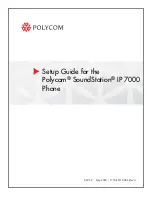
Appendix 237
IMPORTANT NOTE
Radiation Exposure Statement:
This equipment complies with FCC radiation exposure limits set forth
for an uncontrolled environment. End users must follow the specific
operating instructions for satisfying RF exposure compliance. To
maintain compliance with FCC RF exposure compliance requirements,
please follow operation instruction as documented in this manual.
This transmitter must not be co-located or operating in conjunction
with any other antenna or transmitter, except the transmitters built-in
with the device.
FCC Hearing-Aid Compatibility (HAC) Regulations for
Wireless Devices
On July 10, 2003, the U.S. Federal Communications Commission (FCC)
Report and Order in WT Docket 01- 309 modified the exception of
wireless phones under the Hearing Aid Compatibility Act of 1988
(HAC Act) to require digital wireless phones be compatible with
hearing-aids. The intent of the HAC Act is to ensure reasonable
access to telecommunications services for persons with hearing
disabilities. While some wireless phones are used near some hearing
devices (hearing aids and cochlear implants), users may detect a
buzzing, humming, or whining noise. Some hearing devices are more
immune than others to this interference noise, and phones also vary
in the amount of interference they generate. The wireless telephone
industry has developed a rating system for wireless phones, to assist
hearing device users find phones that may be compatible with their
hearing devices. Not all phones have been rated. Phones that are
rated have the rating on their box or a label located on the box. The
ratings are not guarantees. Results will vary depending on the user’s
hearing device and hearing loss. If your hearing device happens to be
vulnerable to interference, you may not be able to use a rated phone
Summary of Contents for DROID ERIS
Page 1: ...User Manual www htc com User Guide by HTC 127 mm...
Page 259: ...Index 259...
















































